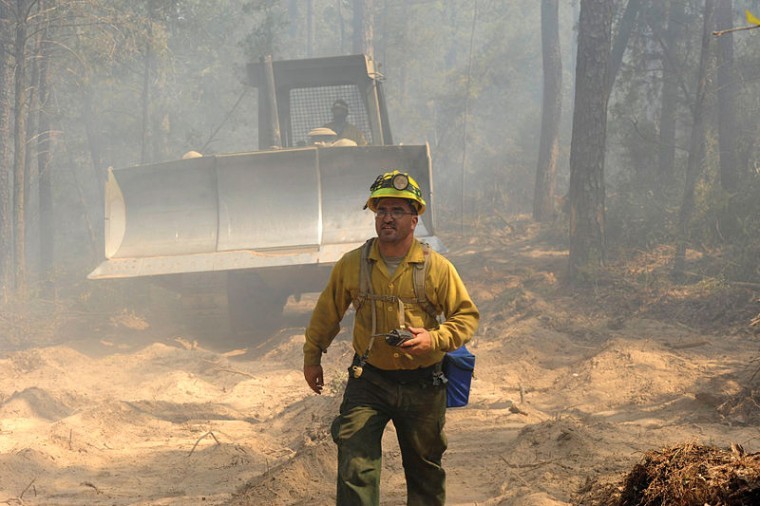Students reflect on Bastrop fires one year later
From the ashes of tragedy, Bastrop County rose to celebrate a year of recovery and hope on Labor Day.
For most people, Labor Day is a time to kick back and enjoy a relaxing day off. But for current and past residents of Bastrop County, Labor Day holds a different significance.
On Sept. 4, 2011, fire sparked in the heart of the Lost Pines Forest in and around Bastrop.
Although many rumors began to spread about what parts of Bastrop were most affected and how much was lost, it took a year to understand how deeply they were impacted.
Junior Kelsey Acosta was one of the first to lose her home.
“It is weird to see how many people still don’t really get it,” said Acosta, who was on campus with her little sister, Shelby, at the time of the fires. “It is not that we just lost our house. It is that we literally lost an entire chapter of our lives.”
That same feeling of loss is still present throughout Bastrop County.
“I drove out there the last week of Aug. and was hit hard thinking about how that used to be my home,” said Ashley Conger, a St. Edward’s student and resident of Bastrop during the fire. “It was just a patch of dirt and rocks and what little trees were left… It’s hard to put words to what was really lost.”
On the anniversary of the Bastrop County Complex Fire, the Bastrop County Long Term Recovery Team, an organization formed by FEMA and the Texas Department of Emergency Management, presented “A Night of Hope.” The event celebrated the Bastrop County recovery efforts over the past year and featured local Bastrop artists such as the Chubby Knuckle Choir and Hannibal Lokumbe. The night also included speakers such as KEYE TV anchor Judy Maggio, a film by Andrew Shapter commemorating the fire and six survivor stories, which varied in content from stories of family urns discovered after the fire to American flags that survived it.
The Bastrop County Long Term Recovery Team also headed the efforts to rebuild the 1,023 uninsured and low-income homes that were destroyed by the fire and to begin rehabilitating the loblolly pines found in the affected areas of Bastrop State Park.
A number of other organizations also help victims experiencing psychological effects of the fire. Darla Absher, a professional with one such organization called Bluebonnet Trails, said in an interview with The Bastrop Advertiser that they have helped 786 people in group sessions who sought help dealing with the after effects of the fire.
Fire victims have also found support from smaller groups, recreating the sense of community in Bastrop County.
“I had only been at my job for a couple months and was absolutely blown away by how the people surrounding me pulled together to support me,” Conger said. “You do not really know how nice some people can be until something really bad happens.”
Those affected say that they do not want to forget because forgetting would mean losing more than the fire took.
“We forget that we do not control the world we live in,” Acosta said, “The fire was something that we had to live through, reflect on, learn from and then just move on. Dwelling on the matter would just be depressing.”







